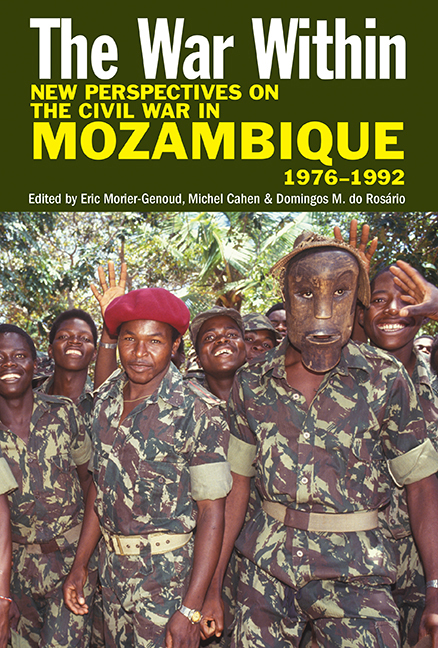Book contents
- Frontmatter
- Contents
- List of Illustrations
- Contributors
- List of Abbreviations
- Introduction The Civil War in Mozambique: A history still to be written
- Part I In the Northern Heart of the Civil War
- Part II In the South Another Kind of War?
- Part III Inside Out: New Perspectives & The World-System
- 7 Mozambique in the 1980s: Periphery goes postmodern
- Conclusion New Perspectives on the Civil War in Mozambique
- Towards a Bibliography of the Mozambican Civil War
- Index
7 - Mozambique in the 1980s: Periphery goes postmodern
from Part III - Inside Out: New Perspectives & The World-System
Published online by Cambridge University Press: 27 July 2018
- Frontmatter
- Contents
- List of Illustrations
- Contributors
- List of Abbreviations
- Introduction The Civil War in Mozambique: A history still to be written
- Part I In the Northern Heart of the Civil War
- Part II In the South Another Kind of War?
- Part III Inside Out: New Perspectives & The World-System
- 7 Mozambique in the 1980s: Periphery goes postmodern
- Conclusion New Perspectives on the Civil War in Mozambique
- Towards a Bibliography of the Mozambican Civil War
- Index
Summary
The proclaimed goal of my colleagues in this volume is to provide a finer-grain picture of the 1977–1992 civil war in Mozambique. Operating mostly at the level of provinces and localities, their chapters go quite far towards this goal. Moreover, their chapters shift the focus of analysis from the Renamo insurgents and their regional sponsors in Rhodesia and the apartheid South Africa to the internecine war itself in its many facets. Shifting analysis to the domestic and localist perspectives arguably has its valid intellectual and political rationale. Yet such analytical shift is fraught with new limitations in terms of space and time. Let me try to push our research agenda still further in a dialectical movement. While the Mozambique tragedy in the 1980s had surely acquired local dynamics, it was also a specific instance in the worldwide collapse of communism and, more generally, the extinction of ‘Old Left’ parties.
This chapter therefore assumes a different perspective tending towards the macrohistorical level. Unlike the rest of the authors, I must admit that my knowledge of this war remains limited to an isolated series of personal observations from the mid-1980s. Yet, in the words of Russian revolutionary poet Vladimir Mayakovsky, the ‘land you hungered with | you can never … forget’. Back in 1984 in the province of Tete where I worked as an interpreter with a team of Soviet geologists, I ‘hungered’ and I also had to carry a gun and a couple hand grenades: in self-defence and, in the last instance, to avoid falling into enemy hands alive. Almost daily somewhere on the roads and in the villages of Tete province, the Matsanga (popular expression for the Renamo rebels) perpetrated spectacularly cruel acts as grim proof of their intent. Luckily for me, Mozambique did not have the jihadist and tribal traditions of Afghanistan where several of my classmates died during the Soviet intervention in the 1980s. In direct confrontation, the Matsanga, as well as many government soldiers proved poor shots, usually fleeing after the first bursts of fire. The majority of ordinary fighters on both sides were the illiterate young conscripts from villages pressed into the fighting with very little training or motivation.
- Type
- Chapter
- Information
- The War WithinNew Perspectives on the Civil War in Mozambique 1976–1992, pp. 203 - 220Publisher: Boydell & BrewerPrint publication year: 2018

